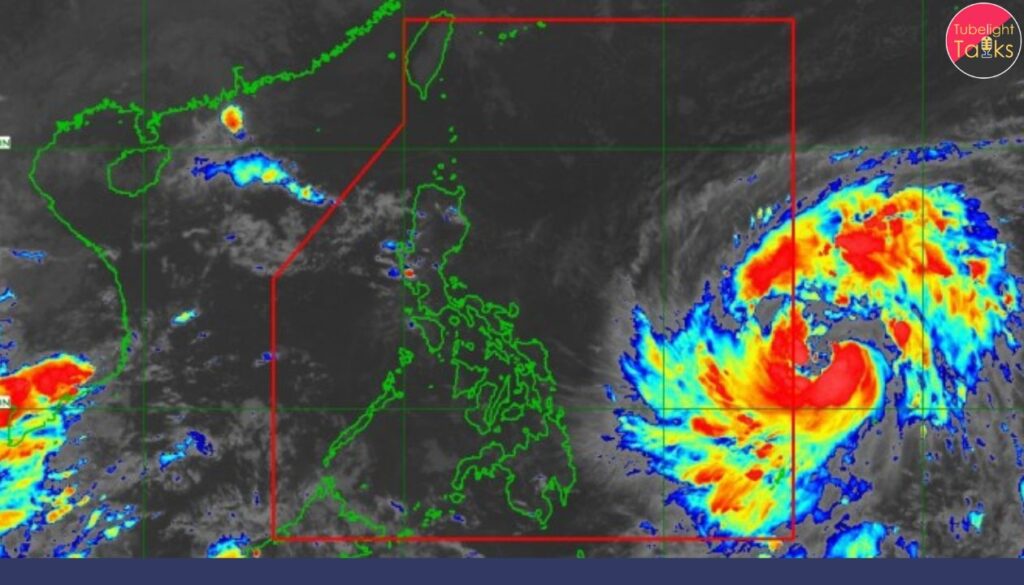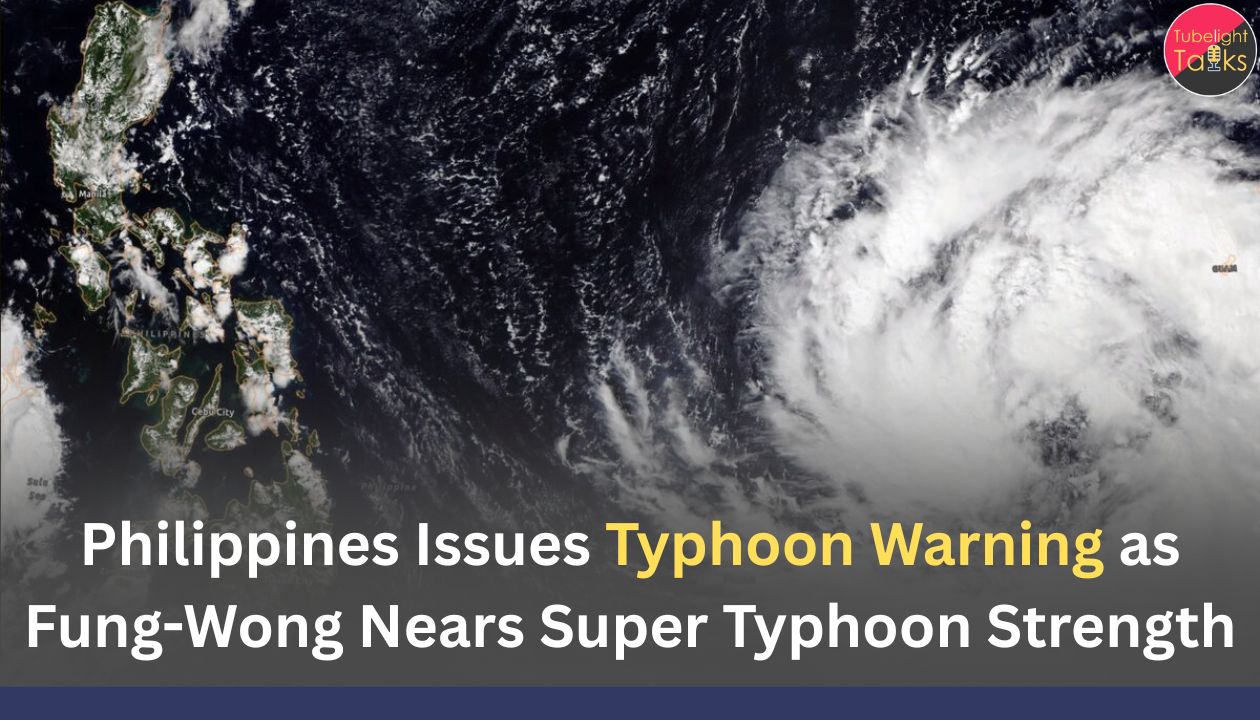Philippines Issues Typhoon Warning: The Philippines is on high alert as Typhoon Fung-Wong intensifies in the Pacific Ocean and heads toward the country’s eastern coastline. The Philippine Atmospheric, Geophysical and Astronomical Services Administration (PAGASA) has issued storm warnings for several provinces, citing “life-threatening storm surges, torrential rains, and destructive winds.” Disaster agencies have begun emergency preparations, and evacuations are underway in vulnerable coastal and low-lying areas.
Current Typhoon Path and Strength
Tracking Fung-Wong
According to PAGASA’s latest bulletin:
- Typhoon Fung-Wong is currently located approximately 320 km east of Catanduanes.
- Sustained winds are up to 185 km/h with gusts reaching 225 km/h.
- The system is moving northwestward at 20 km/h and may strengthen into a super typhoon within the next 12 hours.

“The storm system has the potential to bring record-level surges in eastern seaboard provinces,” said PAGASA Director Nathaniel Servando.
Regions Under Immediate Threat
Provinces on High Alert:
- Catanduanes
- Albay
- Sorsogon
- Camarines Norte and Sur
- Northern Samar
- Leyte and Eastern Visayas
Local governments have activated emergency response teams, suspended school activities, and advised fishermen to avoid sea travel due to dangerously high waves.
Expected Impact
Deadly Storm Surges
Storm surges ranging from 2 to 4 meters are expected along the eastern seaboard. These can cause:
- Severe coastal flooding
- Destruction of homes and roads
- Saltwater intrusion into agricultural zones
Flash Floods and Landslides
With 200–300 mm of rainfall expected in the next 24–48 hours, mountainous and low-lying regions are at risk of:
- Landslides
- Urban flash floods
- Overflowing rivers and dams
Government and Disaster Response
NDRRMC Mobilized
The National Disaster Risk Reduction and Management Council (NDRRMC) has placed all regional units on red alert and instructed LGUs to implement preemptive evacuations.
“Our primary goal is zero casualties. Communities in coastal and landslide-prone areas must evacuate while there’s time,” stated NDRRMC Executive Director Usec. Ariel Nepomuceno. (Source)
Suspension of Transport and Schools
- All sea transport from Bicol to Eastern Visayas is suspended.
- Domestic flights from Manila to Legazpi, Tacloban, and Kalibo are being rescheduled.
- Classes and work are suspended in affected areas until further notice.
Global Climate Perspective
Why Is Fung-Wong So Intense?
Meteorologists say that above-normal sea surface temperatures caused by El Niño and global climate change are fueling stronger storms this year.
According to the World Meteorological Organization (WMO):
“The Western Pacific is witnessing a spike in intense cyclonic activity due to rising oceanic heat content and atmospheric instability.”
Past Disasters Resurface Memories
The storm’s trajectory bears resemblance to Typhoon Haiyan (Yolanda), which devastated the Philippines in 2013, killing over 6,000 people. While Fung-Wong is not expected to reach similar landfall intensity, residents and officials remain cautious due to painful memories and structural vulnerabilities that persist in some provinces.
Finding Spiritual Shelter in Times of Disaster
Preparing the Soul, Not Just the Shelter
Natural disasters often arrive without warning – uprooting homes, lives, and the illusion of permanence. In His discourses, Sant Rampal Ji Maharaj emphasizes the temporary nature of the material world and the importance of spiritual protection above all.
“Only the Almighty Supreme God can protect one from visible and invisible dangers. Build the shelter of true devotion before the storm comes.”
During calamities, people instinctively turn to prayer and divine hope — a clear indication of the soul’s yearning for true refuge. Through Sat Gyaan, one learns how to prepare not just physically but spiritually for the storms of life.
Listen to His teachings on JagatGuruRampalJi.org or YouTube Channel
What You Should Do Now
Immediate Call to Action
1. Follow Official Advisories
- Monitor PAGASA bulletins
- Obey LGU evacuation orders
- Keep emergency kits ready
2. Stay Indoors During Landfall
Avoid going out during heavy rains or wind surges unless absolutely necessary.
3. Help Vulnerable Groups
Assist elderly neighbors, children, and persons with disabilities in evacuation and shelter arrangements.
Also Read: Atlantic’s Chaotic Showdown: Cat 5 Humberto’s Swells and Imelda’s ‘Rain Bomb’ Threaten Coasts
FAQs:Typhoon Fung-Wong Intensified
1. When will Typhoon Fung-Wong make landfall?
Landfall is expected in the eastern region by late November 9 or early November 10, 2025, depending on its speed and trajectory.
2. What areas are most at risk?
Catanduanes, Albay, Eastern Samar, and Leyte are at highest risk due to their proximity to the storm’s eye and coastline.
3. Will the typhoon become a super typhoon?
Yes, meteorologists indicate that Fung-Wong is likely to intensify into a super typhoon within 12 hours due to favorable sea conditions.
4. What preparations are advised?
Evacuate early, stock essential supplies, charge mobile devices, prepare emergency kits, and stay updated with government bulletins.
5. How does this relate to climate change?
Rising ocean temperatures from global warming are contributing to more intense tropical storms in the Asia-Pacific.
6. Are international aid agencies involved?
As of now, no formal request has been made, but agencies such as the Red Cross and World Food Programme are monitoring developments.










